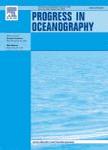版权所有:内蒙古大学图书馆 技术提供:维普资讯• 智图
内蒙古自治区呼和浩特市赛罕区大学西街235号 邮编: 010021

作者机构:Univ Strathclyde Dept Math & Stat 26 Richmond St Glasgow G1 1XH Lanark Scotland Hong Kong Univ Sci & Technol Dept Ocean Sci Kowloon Clear Water Bay Hong Kong Peoples R China Southern Marine Sci & Engn Guangdong Lab Guangzho Hong Kong Branch Hong Kong Peoples R China Xiamen Univ Coll Environm & Ecol State Key Lab Marine Environm Sci Xiamen Fujian Peoples R China Xiamen Univ Coll Environm & Ecol Fujian Prov Key Lab Coastal Ecol & Environm Studi Xiamen Fujian Peoples R China Minist Nat Resources Inst Oceanog 3 Xiamen Fujian Peoples R China
出 版 物:《PROGRESS IN OCEANOGRAPHY》 (海洋学进展)
年 卷 期:2020年第189卷
页 面:102456-102456页
核心收录:
基 金:National Key Scientific Project of China [2015CB954003] Hong Kong Branch of Southern Marine Science and Engineering Guangdong Laboratory (Guangzhou) [SMSEGL20SC02] Research Grants Council of Hong Kong [16101917, 16101318] National Key R&D Program of China [2016YFA0601201] China NSF [41776146, U1805241] National Postdoctoral Program for Innovative Talents [BX20190185] China Postdoctoral Science Foundation [2019M660158] Outstanding Postdoctoral Scholarship, State Key Laboratory of Marine Environmental Science, Xiamen University
主 题:Prochlorococcus Synechococcus Chlorophyll South China Sea Boosted Regression Trees Generalized Additive Models Random Forest
摘 要:Picophytoplankton, the smallest phytoplankton (3 mu m), contribute significantly to primary production in the oligotrophic South China Sea. To improve our ability to predict picophytoplankton abundances in the South China Sea and infer the underlying mechanisms, we compared four machine learning algorithms to estimate the horizontal and vertical distributions of picophytoplankton abundances. The inputs of the algorithms include spatiotemporal (longitude, latitude, sampling depth and date) and environmental variables (sea surface temperature, chlorophyll, and light). The algorithms were fit to a dataset of 2442 samples collected from 2006 to 2012. We find that the Boosted Regression Trees (BRT) gives the best prediction performance with R-2 ranging from 77% to 85% for Chl a concentration and abundances of three picophytoplankton groups. The model outputs confirm that temperature and light play important roles in affecting picophytoplankton distribution. Prochlorococcus, Synechococcus, and picoeukaryotes show decreasing preference to oligotrophy. These insights are reflected in the vertical patterns of Chl a and picoeukaryotes that form subsurface maximal layers in summer and spring, contrasting with those of Prochlorococcus and Synechococcus that are most abundant at surface. Our forecasts suggest that, under the business-as-usual scenario, total Chl a will decrease but Prochlorococcus abundances will increase significantly to the end of this century. Synechococcus abundances will also increase, but the trend is only significant in coastal waters. Our study has advanced the ability of predicting picophytoplankton abundances in the South China Sea and suggests that BRT is a useful machine learning technique for modelling plankton distribution.